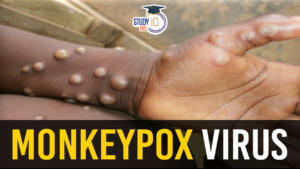Table of Contents
Mobilising Green Financing
Context: National Bank for Agriculture and Rural Development (NABARD) on the occasion of Earth Day unveiled its Climate Strategy 2030 document which aims to address India’s need for green financing.
India’s Green Financing Shortfalls
- The country requires an annual investment of approximately $170 billion, aiming for a cumulative total of over $2.5 trillion by 2030 to meet its climate goals.
- However, as of the fiscal year 2019-20, India has only managed to secure about $49 billion in green financing, which is far below the needed amount.
- Of this, only $5 billion was directed towards adaptation and resilience, highlighting limited private sector involvement due to challenges in bankability and commercial viability.
NABARD’s Climate Strategy 2030
- NABARD’s strategy is built on four pillars:
- Accelerating green lending across various sectors.
- Expanding its role in market-making.
- Undertaking internal green transformations.
- Engaging in strategic resource mobilisation.
| Leading Real Estate Developers and Sustainability Efforts |
DLF – A Case Study in Sustainable Construction
Signature Global (India) Ltd. – Another Example of Sustainable Practices
These practices not only conserve water but also improve the overall resilience of urban water systems. Remsons Industries Receives Recognition for Sustainability
|
New Host Defence Against Viruses
Context: The presence of a virus in bodily fluids does not necessarily imply it can be transmitted through those fluids. While Zika, dengue, and chikungunya viruses are present in saliva and semen, they are not typically transmitted orally or sexually. This paradox has puzzled scientists, but recent research offers explanations.
The Difficulty of Studying Viral Transmission
- Transmission is crucial for a virus’s survival.
- Viruses must be in bodily fluids that come into contact with the external environment to successfully transmit to a new host.
- They are selective about the cells they infect, a phenomenon known as tropism, driven by proteins on the virus that bind to specific receptors on host cells.
- For instance, HIV infects cells that produce the CD4 protein, whereas SARS-CoV-2 targets cells expressing the ACE2 receptor.
- The race between viral replication and the immune system determines transmission success.
The PS Receptor and Apoptotic Mimicry
- Some viruses (including Zika) express phosphatidyl serine (PS) on their surface.
- PS is normally expressed by dying cells to signal their removal by immune cells via the PS receptor.
- Viruses hijack this process (apoptotic mimicry) to infect immune cells.
- The presence of a virus in a bodily fluid (e.g., Zika in semen or saliva) doesn’t guarantee transmission through that route.
Extracellular Vesicles as a Defense Mechanism
- Scientists at the Institute of Molecular Virology in Germany discovered a novel human defence against some viruses.
- Extracellular vesicles, containing PS proteins, are abundant in saliva and semen.
- These vesicles compete with viruses for PS receptors on target cells, thereby preventing infection.
- This explains why some viruses aren’t transmitted through fluids where they’re present (e.g., Zika in saliva).
Implications of the Discovery
- This finding applies to other viruses using PS receptors (dengue, chikungunya, etc.) but not those using different receptors (HIV, SARS-CoV-2).
- PS-coated vesicles represent a new type of antiviral defence.
- Potential therapeutic applications and the evolutionary impact on mosquito-borne viruses are interesting areas for further exploration.
Reducing Paddy’s Methane Emissions
Context: Rice is a staple crop in Vietnam but its cultivation contributes to methane emissions, a potent greenhouse gas. Flooded rice paddies create ideal conditions for methane-producing bacteria. According to a 2023 Food and Agriculture Organization report, rice paddies are responsible for 8% of all human-made methane.
Vo Van Van: A Case Study in Sustainable Rice Farming
- Unlike traditional rice paddies that are continuously submerged, Van’s fields use a technique known as alternate wetting and drying (AWD), which requires less water and results in lower methane production because the fields aren’t continuously flooded.
- He utilises drones for fertilizer application, reducing labour costs and ensuring precise application to minimise fertilizer waste.
- stopped rice stubble burning after harvest, a major source of air pollution. The stubble is collected for alternative uses like livestock feed and mushroom cultivation.
- These techniques have helped Van maintain yields while reducing costs and enabling him to access premium markets for organic rice.
|
Rice Cultivation and Greenhouse Gas Emissions |

Methods to Reduce Methane Emissions in Rice Cultivation
Innovative Uses for Rice Straw Economic Incentives: Organisations like the International Rice Research Institute (IRRI) promote financially viable uses for rice straw to motivate farmers to adopt sustainable disposal methods. Repurposing Straw:
|
Loc Troi Group: Expanding Sustainable Practices
- Loc Troi Group, a major rice exporter, promotes AWD and other sustainable practices among farmers.
- Their methods result in a 40% reduction in rice seed usage, 30% less water consumption, and lower costs for pesticides, fertilizers, and labour.
- Loc Troi currently works with farmers on 100 hectares of land and aims to expand to 300,000 hectares.
India’s Military Expenditure
Context: According to a report released by Stockholm International Peace Research Institute (SIPRI), India was the fourth largest military spender globally in 2023.
Global Military Expenditure Overview 2023
- General Increase in Spending: World military expenditure increased for the ninth consecutive year in 2023, marking a total of USD 2,443 billion, a 6.8% increase from the previous year, which was the largest year-on-year rise since 2009. This is the highest level recorded by SIPRI.
- Military Burden: The world military burden, defined as military spending as a percentage of global GDP, rose to 2.3% in 2023. The average military expenditure as a share of government expenditure was 6.9%, and world military spending per person reached USD 306, the highest since 1990.
Country Wise Top Military Spenders
- United States: The largest military spender with USD 916 billion in 2023, up 2.3% from 2022 and 9.9% from 2014.
- The US spends 3.1 times more on its military than China, the second largest spender.
- Significant increases were noted in research, development, test, and evaluation (RDT&E).
- China: The second largest spender with an estimated USD 296 billion in 2023, marking a 6% increase from 2022 and the 29th consecutive year of increases.
- China accounts for half of the total military spending in the Asia and Oceania region.
- Russia: Third largest which increased its military spending by 24% to an estimated USD 109 billion in 2023.
- India: The fourth largest spender globally with USD 83.6 billion in 2023, up 4.2% from 2022 and 44% from 2014.
- Increased spending mainly due to rising personnel and operations costs, which constituted almost 80% of the total military budget.
- India’s Domestic Focus: 75% of India’s military capital outlays went towards domestically produced equipment, the highest level ever and an increase from 68% in the previous year.
- This shift reflects India’s goal to become self-reliant in arms development and production.
Other Significant Military Spenders
- Ukraine: Ranked as the eighth largest spender in 2023 after a surge of 51% to reach USD 64.8 billion.
- This expenditure represented 37% of GDP and 58% of total government spending. Ukraine also received at least USD 35 billion in military aid, including USD 25.4 billion from the US.
- Europe, Asia and Oceania, and the Middle East: Notable increases in military spending were recorded in these regions, driven by ongoing conflicts and escalating geopolitical tensions, such as those involving Israel-Hamas, Iran-Israel, and Russia-Ukraine.
- NATO Spending: The 31 NATO members accounted for USD 1,341 billion in military spending, equating to 55% of the world’s total expenditure.
About The Stockholm International Peace Research Institute (SIPRI) |
|
State of Climate in Asia 2023
Context: The ‘State of the Climate in Asia 2023’ report by the World Meteorological Organization indicates that the rate of warming in Asia has surpassed the global mean, with the pace of temperature increase almost doubling when compared to the period from 1961 to 1990.
Overview of Disasters in Asia (2023)
- Frequency and Impact: Asia experienced 79 extreme weather, climate, and water-related hazards, which directly killed over 2,000 people and affected more than nine million individuals. Flooding and storm events constituted over 80% of these hydrometeorological hazards.
- Death Toll Distribution: More than 60% of the deaths were due to flooding, and over 15% were attributed to storms.
- Comparative Analysis: The number of disaster events in 2023 slightly decreased by two from 2022, but the impact was less severe compared to the Pakistan floods in 2022, which affected over 30 million people.
Country-Specific Impacts

- India: Faced severe heat waves, rainfall-induced floods, glacial lake outbursts, and tropical cyclones.
- Rainfall-induced floods: Notably, floods in August in Himachal Pradesh and Uttarakhand resulted in 25 deaths and significant damage.
- Tropical Cyclones: India also recorded six tropical cyclones in 2023, slightly above the average, with Cyclone Michaung causing 22 fatalities in south Andhra Pradesh.
- Heatstroke Fatalities: Severe heat waves in April and June led to approximately 110 deaths from heatstroke.
- The most affected regions included Ballia and Deoria districts in Uttar Pradesh, where over 100 deaths were reported, mainly among senior citizens.
- Glacial Lake Outburst Floods: A notable glacial lake outburst flood occurred at South Lhonak Lake in Sikkim, breaching the Chungthang dam downstream on the Teesta River and causing over 40 fatalities.
- Such events are increasingly observed due to climate change-induced glacier retreat.
- Southeast Asia: Suffered from a prolonged heatwave in April and May that extended to Bangladesh, eastern India, and parts of China.
- Myanmar: Cyclone Mocha made landfall on the Rakhine Coast on May 14, resulting in 156 deaths.
Climate Change Indicators and Trends
- Rapid Warming: Asia has warmed faster than the global average, with the warming trend nearly doubling since the 1961-1990 period. This rapid warming is driven by increased surface temperatures, glacier retreat, and sea level rise.
- Impact on Ecosystems and Economies: The accelerating rate of climate change indicators poses major consequences for Asia’s ecosystems and economies.
Ethylene Oxide
Context: The Food Safety and Standards Authority of India (FSSAI) has initiated an investigation into powdered spices sold in India. This action follows after authorities in Hong Kong and Singapore found high levels of the carcinogen ethylene oxide in four spice mixes from two of India’s top spice manufacturers, MDH and Everest.
What is Ethylene Oxide?
- Ethylene oxide is a pesticide and industrial chemical used as a fumigant by the spice industry to reduce microbial contamination like E. coli and Salmonella.
- It is classified as a Group 1 carcinogen by the International Agency for Research on Cancer, indicating strong evidence from human studies that it can cause cancer.
- The chemical is colourless, highly flammable, and very reactive, effectively killing bacteria, viruses, and fungi.
- Health Risks of Ethylene Oxide Consumption
- Ethylene oxide can damage DNA and increase the risk of various cancers, including leukaemia, stomach cancer, and breast cancer.
- Chronic exposure through regular consumption of contaminated spices is a concern.
- Additionally, Ethylene oxide exposure may also cause respiratory irritation, lung injury, nausea, vomiting, and diarrhoea.
Global Regulations on Ethylene Oxide Use in Food
- The European Union (EU) banned ethylene oxide for food fumigation in 2011.
- Its use is currently only permitted for medical device disinfection and sterilisation.
Examples, Data and Case Studies For Value Addition
- Melting Of Glaciers (GS 1): The Indian Space Research Organisation’s (ISRO) long-term satellite imagery covering the catchments of Indian Himalayan river basins from 1984 to 2023 have shown significant changes in glacial lakes.
- More than 27 percent of the identified glacial lakes in the Himalayas have notably expanded since 1984, and 130 of those are in India.


 Current Affairs 4th May 2024 for UPSC Pr...
Current Affairs 4th May 2024 for UPSC Pr...
 India-Indonesia Defence Cooperation
India-Indonesia Defence Cooperation
 Monkeypox Virus, Symptoms, Transmission ...
Monkeypox Virus, Symptoms, Transmission ...

















